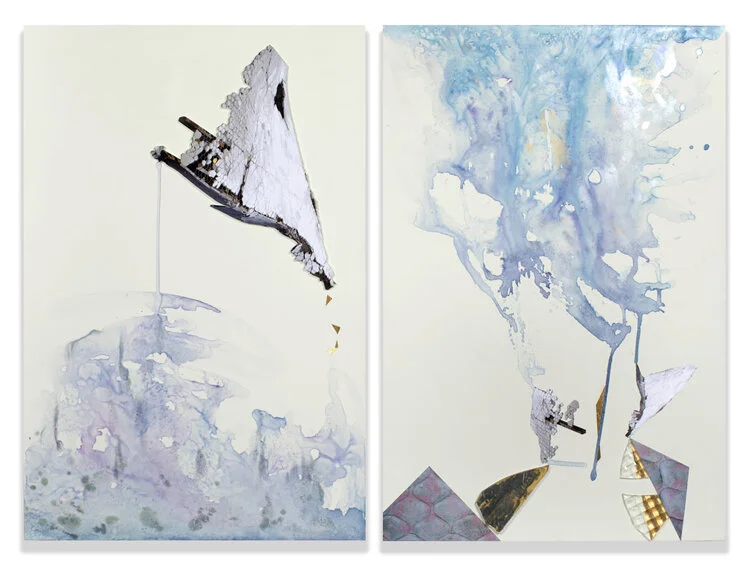Art and Cake: Space + Land
Chelsea Dean in Space + Land. Photo courtesy of the artist.
September 8, 2018
by Lorraine Heitzman
The four artists participating in the Fellows of Contemporary Art’s Curators Lab Exhibition are like members of any good band; each one embodies a different characteristic that contributes to the success and appeal of the whole. Chelsea Dean has curated a show that focuses on our local, built environment through different perspectives, her own, as well as those belonging to Susan Feldman, Susan Logoreci and Aili Schmeltz. The cardinal elements that constitute the artists’ work are Feldman’s tactile earthiness, Schmeltz’s austere and conceptual approach, Dean’s delicate desolation and Logoreci’s kaleidoscopic geometry. Seen together, Space + Land suggests myriad ways to perceive the landscape and architecture that impact our lives. From the quiet and poetic to the vivid and intellectual, the differences make for an engaging and complete experience.
Dean has included several of her mixed media works that employ photographs, monotypes, found objects, decorative papers, watercolors and graphite. These, like many of her other paintings reveal the human imprint on the California desert. She has an eye for abandoned structures, the forlorn and forgotten buildings that litter the otherwise empty landscapes. Contrary to the gritty circumstances and time worn materials that she encounters, she reinvents her subjects with finesse and in doing so, elevates the melancholy scenes to a meditation about loss, isolation and the temporal nature of man-made habitats.
Feldman’s freestanding sculpture, Flat, like all her work, is as rugged as Dean’s work is refined. Using small wood scraps and twine, she knits together her disparate pieces into a unified assemblage, while each element maintains its autonomy. The work exudes the rough energy of their crazy quilt fabrication, and in the manner of a crazy quilt, they delight in their complexity. This is not the studied construction of a Nevelson, but a testament to the joy of building and making connections between structures and materials through transparencies, photographs, and scribbles. In both her floor and wall pieces, Feldman’s crude construction methods are integral to her work, as if the frenzied assemblages themselves would not tolerate a more exacting, subtle style.
Schmeltz has two works on display that question both two and three-dimensional ideas about representation. Cartesian Cube Object Window is an austere steel construction composed of interlocking, open metal grids, suggesting a graph in sculptural form. Devoid of ornamentation, it defines space in the most basic way and implies an architectural space in a purely conceptual manner. It occupies space as a sculpture, but refers to volume as a three- dimensional model of a drawing. Her drawing, though similarly pared down, is a more evocative depiction of the illusion of depth. The void at the center of the piece is alluring, the soft graphite void barely contained by the folded perimeter.


